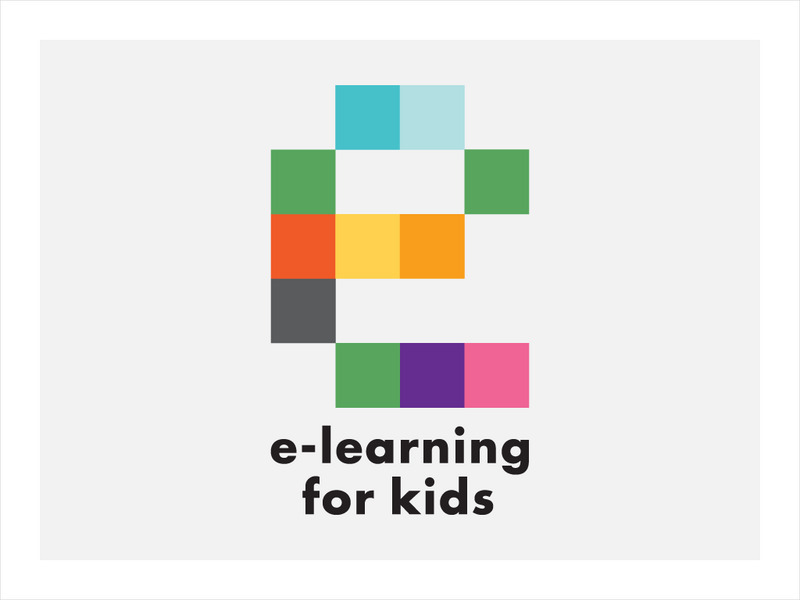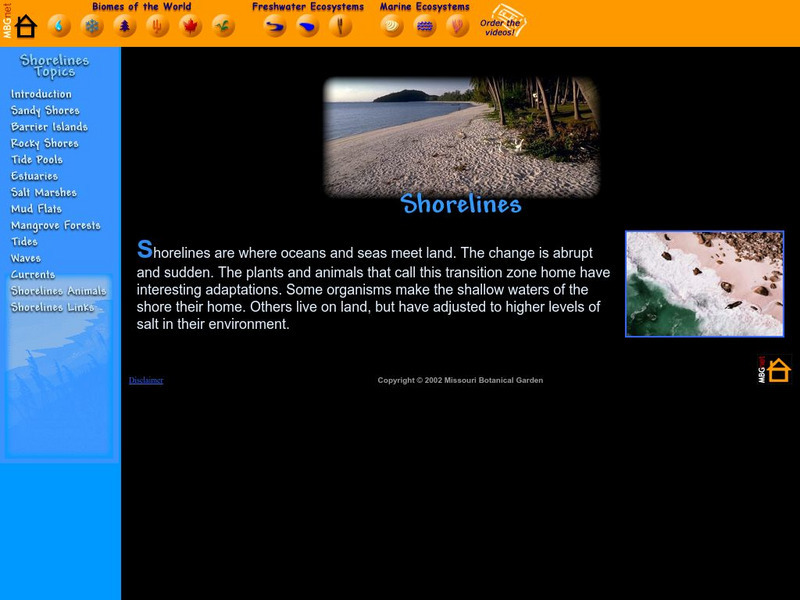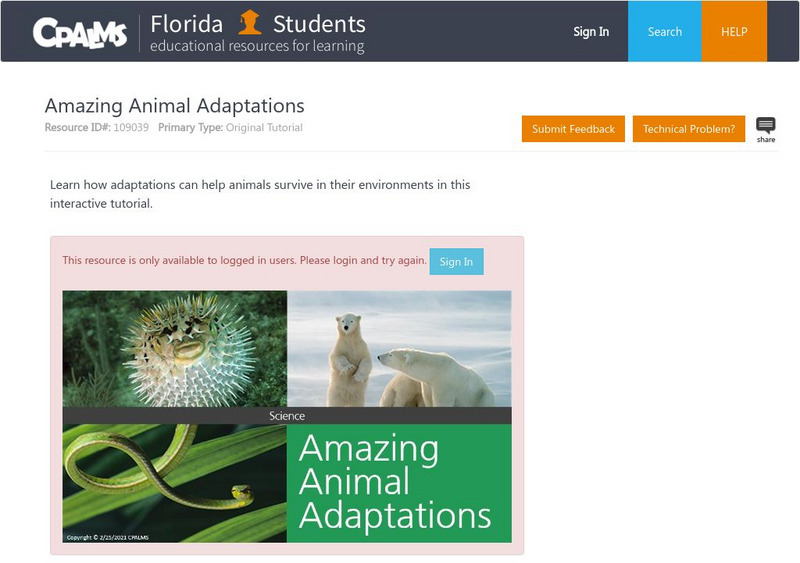Library of Congress
Loc: Poetry 180: A New Poet
This six-stanza poem describes the characteristics of a new poet.
E-learning for Kids
E Learning for Kids: Science: Bermuda Triangle: How Are Animals and Humans Similar to and Different From One Another?
Paula has landed on an unknown island. She learns a lot about all the different animals on this island. Join her and learn with her.
E-learning for Kids
E Learning for Kids: Science: Caribbean Sea: Mexico: What Is Classifying?
Christina wants to classify all kinds of different things. Help her sort things into main groups.
E-learning for Kids
E Learning for Kids: Science: Iceland: What Are Adaptations?
Join Ike when he travels in the Arctic to learn about how animals adapt to cold environments.
E-learning for Kids
E Learning for Kids: Science: Rio De Janeiro: Animals and Their Babies
Join Emma and the children's carnival parade. Visit the zoo, and have a good look at the animals.
E-learning for Kids
E Learning for Kids: Science: Scotland Kilt Store: Classify by Property
Mr. Wallace owns a store and needs help sorting items in his shop. Help him explore properties of common objects.
PBS
Pbs Learning Media: Bird in Flight
Students are asked to explain the characteristics of the bird in flight and how adaptations would allow the bird to fly a particular way. [0:32]
PBS
Pbs Learning Media: Fish Behavior
Students are asked to explain the advantages of a fish participating in a school.
University of California
Ucmp: Nematoda Roundworms
General info from the University of California on the the physical characteristics and population ecology of roundworms.
Shodor Education Foundation
Shodor Interactivate: Lesson: Sets and the Venn Diagram
This lesson plan offers lots of tools and interactive materials to teach the idea of sets and make use of the Venn Diagram.
Science Education Resource Center at Carleton College
Serc: Using Inquiry to Group Minnesota Critters
Students will observe and investigate various characteristics of Minnesota critters, and then chart and give reasons for the way they grouped them.
Science Education Resource Center at Carleton College
Serc: Classify the Trees/leaves
Students go outside to look for trees and gather leaves. Working cooperatively they will sort and try to classify the trees by the characteristics of their leaves.
Science Education Resource Center at Carleton College
Serc: Graphing Fall Leaves
Students use leaf classifications they created to graph the properties of leaves they collected on their playground.
Missouri Botanical Garden
Missouri Botanical Garden: Tide Pools
Click on tide pools on the left hand menu to find a description of tidepools. Use the menu to navigate to other shoreline related topics.
Wikimedia
Wikipedia: Mammal
Wikipedia, an open-source encyclopedia, provides great information on mammals. Content includes a look at mammal characteristics, origins, classification, and more.
Other
Tarantula's Burrow: British Spiders What Is a Spider?
A list of characteristics that a creature must satisfy to be considered a spider, as well as a list with pictures and descriptions of spiders commonly found in the UK.
Other
K 3 Learning Pages: Reptiles and Amphibians
Come and discover more about reptiles and amphibians when you explore this awesome resource. This site is filled with useful links.
Other
Tarantula's Burrow: British Spiders What Is a Spider?
A list of characteristics that a creature must satisfy to be considered a spider, as well as a list with pictures and descriptions of spiders commonly found in the UK.
McGraw Hill
Glencoe Biology: Introduction to Animals: Chapter Test Practice
A fifteen question self-checking chapter review over animals and animal characteristics.
ReadWriteThink
Read Write Think: Lights, Camera, Action: Interviewing a Book Character
Students get the inside scoop on a story when they create interview questions and answers for characters in the books they read.
Scholastic
Scholastic: Study Jams! Science: Animals: Kingdoms of Life
A playful interactive introducing biology's five animal kingdoms. Watch the video, take a quiz, and review vocabulary.
Daily Teaching Tools
Daily Teaching Tools: Concepts and Characteristics
This Daily Teaching Tools resource provides graphic organizers. Students will be able to take notes via different concept maps.
E Reading Worksheets
E Reading Worksheets: Personification Worksheets
This learning module provides remediation and extra practice with identifying and explaining personification in sentences. Reinforcement for personification is provided through the nine different worksheets.
CPALMS
Florida State University Cpalms: Florida Students: Amazing Animal Adaptations
Explore various characteristics and adaptations that help organisms survive in different environments.






















